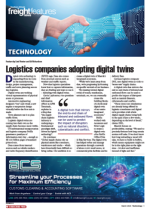Technology is revolutionising the logistics industry, reshaping supply chains with advancements like the internet of things (IoT), 5G, blockchain, collaborative computing, and virtual simulation. According to Michael Henning, sales manager at Easy Clear, this enables the management of more complex supply chains, resulting in a new paradigm emerging. “Known as Global Trade 2.0, this paradigm shift is driven by digitalisation, the standardisation and framework of legislation, interconnected trust ecosystems, and industry systems facilitating data-driven commerce,” he says. “This evolved infrastructure connects international partners, stakeholders and players seamlessly, establishing a new standard for conducting business.”In turn, this enables more informed decisions that are based on predictive analytics, a higher capacity for more significant volumes of transactions and the ability to meet the ever-increasing demands of consumers for tighter deadlines and more frequent deliveries. Henning notes a trend towards increased data sharing, particularly with trusted partners, facilitated by connected infrastructure or digitally enabled corridors. This shift towards an end-to-end supply and value chain is attributed to the significant rise in data availability that digitalisation provides.“Nevertheless, challenges persist,” he says. “The deployment of and investment in technology across the continent is being hindered by skills shortages, especially in less developed countries.”For Henning, the adoption of Accredited Economic Operators (AEOs) is an encouraging development that is gaining traction. That’s because AEOs deal with ecosystems of trust which enable trade and are becoming the usual way of doing business, with reduced risk and greater supply chain visibility for both the public and private sector.He says the use of technology and Industry 4.0 brings about an opportunity to manage and reduce the complexities of modern trade while making global trade fairer and more inclusive, as barriers to entry are lower than in the old trade paradigm.“As a solution provider, Easy Clear must meet the needs of a demanding, challenging and changing supply chain,” says Henning. “We are, therefore, constantly evaluating new technology and industry trends to stay abreast of changes in the industry and to meet our clients’ business needs. “We have introduced changes to streamline the low-value consignment capture and South African Revenue Service submission for our courier sector.”

